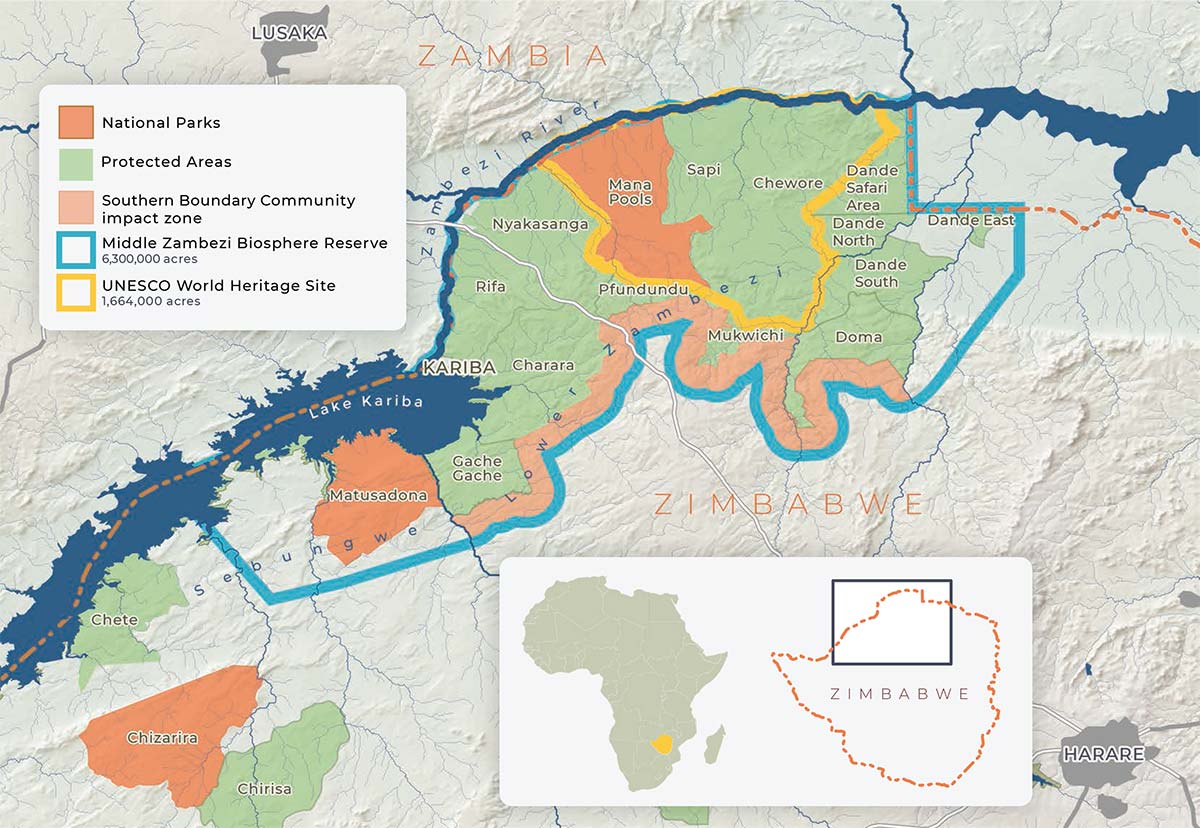THE MIDDLE ZAMBEZI LANDSCAPE
The Zambezi Valley is an iconic, world-class wildlife and scenic resource. Here, you’ll find the Zambezi River’s longest, contiguous expanse of riverine wilderness, which stretches 230 kilometres and represents the lifeblood of 6,3 million acres of ecologically significant and diverse habitat.
WHAT’S SO SPECIAL ABOUT THE ZAMBEZI VALLEY?
The Zambezi is the continent’s fourth-largest river, and features dramatic and iconic floodplains, deciduous miombo woodlands and mineral-rich grasslands along its course; a biodiversity which, in turn, attracts a prolific and varied wildlife population of global biological significance. The boundaries of the Zambezi Network’s current area of interest coincide closely with those of the UNESCO Middle Zambezi Biosphere Reserve, which was gazetted in 2010. UNESCO describes Biosphere Reserves as being “learning places for sustainable development”, and as “places that provide local solutions to global challenges.” The success of these ambitions will depend heavily on strengthening the benefits to local councils and communities.

SECURING THE HOLISTIC PROTECTION OF THE ZAMBEZI VALLEY
The Zambezi Valley Conservation Network was initiated by a community of conservationists who understand the urgency of addressing these gaps and threats. We believe that innovative and often radical solutions are needed to sustainably protect a landscape as vast as the Zambezi Valley. As a landscape-wide focused organisation, the Zambezi Network can play a valuable role in optimising conservation efficiencies and synergies and delivering solutions where critical conservation resources are currently lacking.
CRITICAL THREATS TO THE LANDSCAPE
Poaching and Illegal Wildlife Trade
Illegal hunting or “poaching” continues to be a major concern throughout the landscape and is significant in both subsistence level hunting, as well as the illegal killing of several high value species for international trade.
Mining and Extractives
Interest in minerals and hydrocarbon exploration have been constant threats to the Valley ecology for some years. The conflicting land use issues highlighted by mining claims must be countered by illustrating that the value delivered by sustainable natural resource development can provide equal or greater economic and social benefits to mineral extraction.
Habitat Loss
Habitat loss due to agricultural conversion and wood fuel demand has accelerated in the last decade. Pressure on natural habitat is aggravated by the wood-fired tobacco curing process and the consequential massive loss of natural forest habitat.


